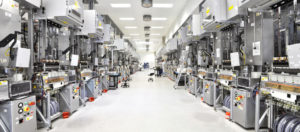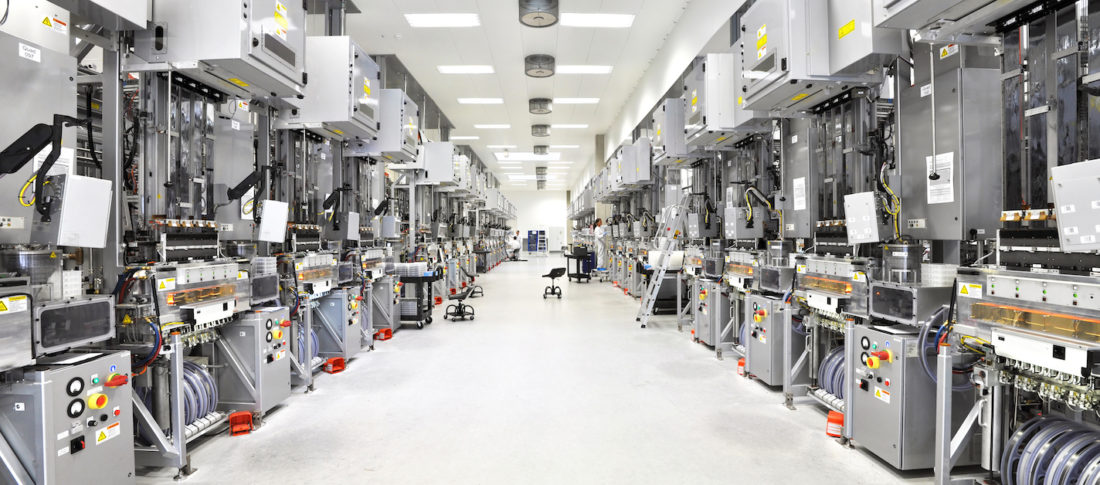
One of the hottest topics of conversation in the industry right now—and a big part of the mission of organizations like the Manufacturing times Digital institute (MxD) in Chicago—is the digital thread, and the related concept of the digital twin.
Decision makers and senior leaders at large companies are talking with great urgency about the importance and transformative potential of the digital thread. Articles are being written, and important strategic decisions are being made—sometimes without a full and complete understanding of the nuances and complexities associated with the technology.
The problem, as I see it, is that this topic is all too often discussed in a theoretical or general way, which can inhibit a full understanding of the challenges and opportunities it presents. So let’s be clear about exactly what the digital thread is, and evaluate the implications in the context of a realistic example.
What Is Digital Thread and Digital Twin Technology?
Much of modern life has benefitted from digital connectedness. We can make bank transactions, order clothes, chat with people around the globe and hail rides using apps on our phones. This digital transformation has streamlined information flows, reduced barriers and enabled efficiencies that were not imaginable before the internet revolution.
The industrial world has also benefitted from digitalization in areas like engineering design, supply chain and production control systems.
There are a lot of great tools available to solve particular business problems, and the typical manufacturing company has hundreds of software tools that fulfill various needs within the business. These tools are used by different organizational units within the business for engineering design, manufacturing engineering, quality, marketing, purchasing, shipping, etc.
In today’s hyper connected world, why shouldn’t all of these tools be able to communicate to each other? Why shouldn’t engineering change notices pass seamlessly into production?
People are working hard to make this a reality, and it is called the digital thread.
The Digital Thread & Common Manufacturing Dilemmas
The digital thread connects systems that have traditionally been separate, such as design engineering and manufacturing, eliminating miscommunications between factions of the enterprise and helping to reduce costs associated with transcribing data from one system to another. While this often involves complicated systems, the core concept is simple: seamless communication.
When a designer makes a change to a product, they need the change approved and implemented throughout the enterprise. This often involves hundreds of man-hours to document information and copy relevant content between different forms.
For example, let’s say that a single screw must be made slightly longer. The process would require an engineering change request, evaluation, modeling, testing, approvals, release of engineering drawings and notices sent to manufacturing facilities and supply chain systems.
Then, old screws need to be phased out and new screws ordered. New screws arriving at the plant need to make it to the proper work station, and work instructions need to be revised, approved, posted, and notices sent out to plant personnel. A shaker table that used to present the old screw may need to be replaced with one designed for the longer screw. Torque tools that were tightening the shorter screw might need to have their torque parameters adjusted.
Solving problems like this has been an obsession of many of the world’s largest industrial companies and their suppliers. Modern supply chains and rapidly evolving, customizable products are making a difficult problem even more challenging.
The Good News
The good news is that many companies have built wonderful tools to marshal their data between design centers, vendors, manufacturing plants and other parts of their enterprise. Solutions from companies like Siemens, Dassault Systems and others are eliminating costly delays, transcriptions and mistakes by virtue of their connectedness.
The Bad News
The bad news is that nearly all of manufacturing is failing at one very simple task: communicating to the persons working in their plants. Even the most streamlined work instructions with the most integrated design systems still rely on people looking away from their work to interpret abstract diagrams on paper or a monitor.
Not only is there clearly non-value-added time involved in looking at paper and monitors instead of actively working, but there is tremendous risk that someone will misinterpret an instruction or else fail to carry out the instruction due to a distraction or a lapse in their short-term memory. Even operators who think they have everything memorized and handled well will skip over low-runner options out of the sheer force of habit.
Enter The Digital Twin
The digital twin is a virtual model of a specific instance of a real-world process, product or service: a digital replica that exists in conjunction with its real-world counterpart.
In a manufacturing context, the digital twin encompasses every piece of information about parts, processes and people that goes into every product. It’s the logical evolution of the digital thread: the notion that every piece of information at every step in the lifecycle of a product—from concept and information-gathering, through to design, manufacturing, shipping, and warranty servicing—is tracked, monitored, and seamlessly integrated.
Think of the digital thread as the story of a product—and the digital twin as a fully rendered and constantly evolving model of that product.
The potential unlocked by the digital twin is exciting. Having an abundance of relevant, real-time information allows you to improve processes, recover from failures, and optimize all aspects of your operations.
It can be enormously valuable in planning and testing, and the volume and specificity of data collection provides complete transparency across and through the process—yielding unprecedented and unparalleled insights into your workflow.
Where AR Enters the Mix
Consider how the digital twin facilitates an engineering change notice based on a new product requirement. Augmented reality offers the potential to vastly improve the communication of up-to-date information to operators on the plant floor.
To be clear, there are many forms of augmented reality, and even the best platforms suffer from hardware limitations and crudely made instructions. It is just as important to have skilled authors of your AR work instructions as it is to have a skilled CAD designer or a skilled machine operator.
Even with the digital thread automating the creation of work instructions, it takes a skilled engineer with awareness of human factors to ensure that information is shared in a way that is easily consumed and utilized by production operators.
That’s where our augmented reality software, LightGuide Systems (LGS), comes in.
Not only does LGS provide the premier human-machine interface on the market, the technology bridges the only remaining gap in the seamless digital thread flow of information: from the computer to the human being who needs to interpret and act upon that information. In other words, LGS plays an enormously important role in taking the digital thread and the digital twin out of the realm of theory and into practical everyday application.
This is why when we deploy LightGuide Systems with a new customer, we always help author the first set of instructions and/or templates that will be used for automatically-generated work instructions. Our authoring techniques are easy to copy, but would be non-obvious to persons not familiar with this method of conveying information.
Final Thoughts
In short, the digital thread has made some tremendous strides in recent years connecting all of the digital systems within enterprise environments. Humans, however, are not digital systems and there are often weaknesses in conveying information to people and collecting information from human work. Augmented reality stands to help address these weaknesses in a far more effective way than traditional methods.


